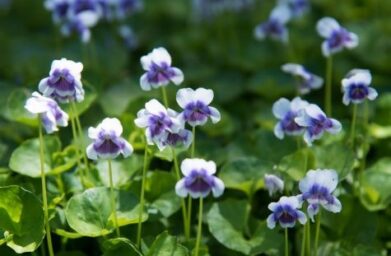Soils and soil improvement
Preparation of the soil is dependent on soil type and site conditions. There are three main types of soil:
- Sandy soils that drain rapidly
- Clay soils that hold water
- Loamy soils containing a mixture of coarse and fine particles.
Soil texture determines the soil’s ability to retain water for use by plants. Fine-textured clay soils hold the most water due to the greater surface area around soil particles. These soils may be unsuitable for some types of plants. Sandy soils may dry out quickly in dry weather. Loamy soils that contain plenty of organic matter are ideal for plant growth.
Hardy, deep rooted plants can help break up poor soils. Organic matter can be added to soil to encourage microbial and worm activity, thereby improving soil condition and moisture retention.
Potential acid sulfate soils and salinity are major soil problems. Check with your local council to see if your site could be affected, and whether any specialised strategies are required. Careful design, construction and ongoing management techniques for building, drainage and landscaping works are necessary in these situations.
If soils have been compacted by construction work or vehicles, remediation can be undertaken to open up pore spaces, promote aeration, and improve water infiltration and holding abilities.
There are a number of soil additives that can be used to improve general soil performance. Common soil additives include the following.
Wetting agents for hydrophobic (‘non-wetting’) soils, including some sandy soils and soils with lots of organic matter. Watering results in beads of water running-off rather than soaking into the root system. The wetting agent can be mixed with backfill at planting times, or applied later.
Gypsum may be added to dispersive or sodic clay soils. Always test the soil to see if it is needed and to determine the correct application rate.
Water-storing crystals can hold hundreds of times their weight in water. When mixed with water they form a soft gel and retain water. This provides a reservoir of moisture for plant roots during dry periods. (WSUB, ‘Landscape Practices’ Practice Note 8’; see also Walsh, Waterwise Gardening, pp 28-40)
Plant selection
Selecting and using plants with low water demands is an essential step towards achieving a waterwise garden. As Kevin Walsh points out such a garden won’t restrain your planting palette or the overall aesthetic of your garden as much as you fear.
As you may expect, many Australian native plants are extremely well adapted to dry conditions. Many of our local native grasses are particularly useful as drought tolerant plants. Many new native varieties also can be used to create a more ‘natural’ feel or for more traditional garden styles such as borders and hedging and blending with ornamentals. Not all natives are adapted to dry conditions though. Those from rainforest, creeklines or wetlands would require different moisture treatments.
“Indigenous native plants are those that grow and reproduce naturally in the area in which you live. Because these plants have developed over millennia to suit the climate, soils and other conditions of the area, they are uniquely adapted and often survive where many other plants fail. By growing indigenous plants you are making a waterwise choice for your garden and helping to preserve the biodiversity of your local area”
(Kevin Walsh, Waterwise Gardening, p. 55)
Some other areas in the world have similar climates to our own and therefore plants that will perform well in our drier Australian gardens. These areas include much of the Mediterranean, South Africa, and southwestern parts of north America.
Kevin Walsh has a large selection of drought-tolerant plants to select for waterwise gardens. Some species however can be invasive and some caution should be used by those living close to bushland areas not to introduce bushland weeds (Walsh, pp. 54-121).
Watering zones and irrigation
Newly planted areas will require more water than established plants. The first growing season is the most crucial for good root establishment. New plants need to be monitored, especially in weather extremes. Use the following guidelines to help ensure efficient and effective watering.
- Apply slow watering to encourage deep root penetration
- Decrease watering frequency as plants settle in.
- For maximum watering efficiency, group plants together with similar watering needs (‘hydrozoning’).
- Take care that the underlying subsoil is not saturated as this can be a cause of wilting leaves. Rectify by improving subsoil drainage or using species that can cope with the conditions.
- Water according to soil moisture and plant needs rather than to a fixed schedule. Test the soil 50 mm below the mulch to see if it is dry before applying water.
- Divide garden beds into sections and alternate between them at watering times, concentrating on one with deep soakings.
- Minimise evaporation by watering in the early morning or late afternoon. Apply water to the roots rather than the foliage, as some plants are susceptible to pest and fungal diseases if left with damp leaves, especially overnight.
- Avoid watering in windy conditions as much water is lost to spray drift.
- If using a handheld hose, use a trigger-operated nozzle to control flow whilst moving between plants.
(WSUD, ‘Landscape Practices’ Practice Note 8’; see also Walsh, Waterwise Gardening, pp 137-152)
If you design your garden to have groupings of plants with similar water requirements you can water zones as required. For example, you may have your vegetable patch, herb garden and ornamentals (with greater water requirements) close to the house, and have your native gardens and screens (with less water required) grouped together further away.
The installation of fixed sprinkler systems and drip irrigation (if properly designed and maintained) can greatly improve water use efficiency. Moveable soaker and sweat hoses are also available to reduce water use. Finally, you may consider the installation of water tanks to collect and store rainwater and the recycling of grey water onto your garden. (See Walsh, Waterwise Gardening, pp. 136-169)
References
- Paul Urquhart, (1999), The New Native Garden: Designing with Australian Plants, New Holland Publishers, Sydney, NSW
- Kevin Walsh, (2004), Waterwise Gardening, New Holland Publishers, Sydney NSW
- Allan Windust, (2003), Waterwise house and garden: a guide for sustainable living, Landlinks Press, Collingwood, Vic.


